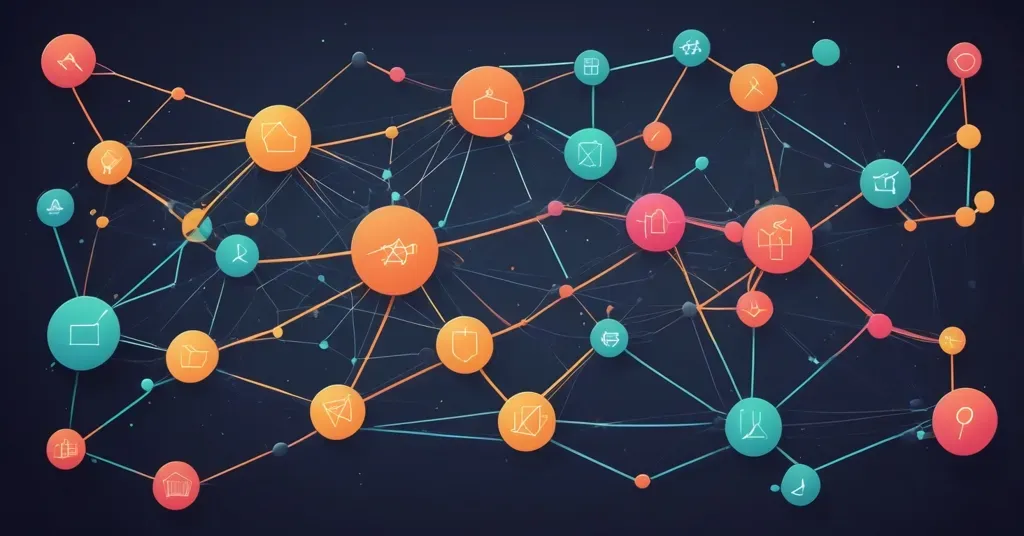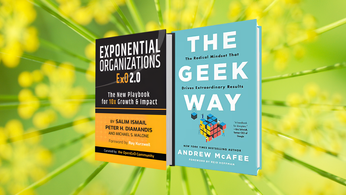
Experimentation in Education: Validating Assumptions and Enhancing Learning
In a pilot project in Nairobi, Kenya, students used Minecraft to redesign a public space, resulting in a 20% increase in community engagement and a 15% improvement in students' understanding of urban planning concepts.
Experimentation, a key attribute of exponential organizations, involves validating assumptions before making significant investments in new ideas or organizational changes. In the context of education, this approach can lead to innovative teaching methods, improved learning outcomes, and more efficient resource allocation. This article explores how experimentation is being applied in educational settings and its potential to transform the learning experience.
The Role of Experimentation in Education
Experimentation in education allows institutions to test new teaching methods, technologies, and curricula on a small scale before widespread implementation. This approach helps mitigate risks associated with large-scale changes and provides valuable insights into what works best for students and educators.
A study by the Education Endowment Foundation found that schools that regularly engage in experimentation and evidence-based practices show improved student outcomes. The study reported a 2-3 month gain in academic progress for students in schools that implemented evidence-based interventions[1].
Case Studies in Educational Experimentation
Minecraft in Community Design
One notable example of experimentation in education is the use of Minecraft to teach community design and urban planning.
The "Block by Block" initiative, a collaboration between UN-Habitat and Mojang Studios, has used Minecraft in over 100 projects across 35 countries to engage students and community members in urban design[2].
In a pilot project in Nairobi, Kenya, students used Minecraft to redesign a public space. The project resulted in a 20% increase in community engagement and a 15% improvement in students' understanding of urban planning concepts[3].
Flipped Classroom Model
The flipped classroom model represents a significant experimental approach in education. In this model, students engage with lecture content at home through pre-recorded videos or readings, while class time is devoted to collaborative work, problem-solving, and discussions. This inversion of traditional teaching methods aims to enhance active learning and deepen understanding.
A comprehensive meta-analysis of 114 studies found that flipped learning had a small but significant positive effect on learning outcomes, with an average effect size of 0.35[4]. This effect was more pronounced in certain contexts:
- Higher Education: The impact was stronger in college and university settings (effect size 0.35) compared to K-12 environments (effect size 0.23).
- STEM Subjects: Flipped classrooms showed larger effects in science, technology, engineering, and mathematics courses.
- Short-term Implementation: Interestingly, studies with implementations lasting less than one semester showed higher effect sizes (0.39) than those lasting a full semester or more (0.29).
A notable example of successful implementation is the flipped classroom experiment at Clintondale High School in Michigan. After implementing a flipped model, the school reported:
- A 33% decrease in the freshman failure rate
- A 66% reduction in disciplinary cases
- An 11% increase in graduation rates[5]
However, it's important to note that the effectiveness of flipped classrooms can vary based on subject matter, student characteristics, and implementation quality.
A study by the Center for Research and Reform in Education found that while flipped classrooms generally improved students' attitudes towards learning, the impact on standardized test scores was mixed[6].
These findings underscore the importance of careful experimentation and evaluation when implementing new educational models. The flipped classroom approach demonstrates how experimentation can lead to innovative teaching methods that potentially enhance student engagement and learning outcomes.
Benefits of Experimentation in Education
Experimentation in education offers a range of advantages that can significantly enhance the learning experience and institutional effectiveness. One of the primary benefits is the improvement of learning outcomes. By systematically testing different approaches, educators can identify the most effective methods for their specific student populations. For instance, a study by the Education Endowment Foundation found that schools implementing evidence-based interventions saw an average gain of 2-3 months in student academic progress[7]. This highlights how experimentation can lead to tangible improvements in student performance.
Another crucial benefit is cost-efficiency. Educational institutions often operate under tight budget constraints, making it crucial to allocate resources effectively. Small-scale experiments allow schools and universities to validate ideas before investing significant time and money into full-scale implementations.
For example, Arizona State University's adaptive learning program began as a small experiment in a few courses before being scaled up, saving an estimated $13.8 million in instruction costs while improving student outcomes[8]. This approach not only saves resources but also minimizes the risk of implementing ineffective strategies on a large scale.
To recap, the key benefits of experimentation in education include:
- Improved learning outcomes
- Cost-efficiency
- Personalization of learning experiences
- Fostering a culture of innovation
By embracing experimentation, educational institutions can create more effective, efficient, and innovative learning environments that better serve their students and communities.
Risks and Risk Management in Educational Experimentation
While experimentation in education offers significant potential benefits, it also presents several risks that need to be carefully managed. Understanding and mitigating these risks is crucial for educational institutions and ed-tech businesses to successfully implement experimental approaches.
1. Reputational Risk
One of the primary risks in educational experimentation is potential damage to an institution's reputation if experiments are perceived as using students as "guinea pigs" or if they lead to temporary decreases in performance metrics.
Risk Management Strategy: Implement a robust communication plan that clearly articulates the purpose, methodology, and potential benefits of experiments to all stakeholders, including students, parents, and accrediting bodies. Ensure that all experiments comply with ethical guidelines and have been approved by an institutional review board.
2. Financial Risk
Experiments can be costly, especially if they require new technology or significant changes to existing systems. There's a risk of investing resources in approaches that may not yield positive results.
Risk Management Strategy: Start with small-scale pilot projects before full implementation. Establish clear metrics for success and predefined decision points for scaling up or terminating experiments. Consider partnerships with ed-tech companies or research institutions to share costs and expertise.
3. Operational Disruption
Implementing new experimental approaches can disrupt existing processes and routines, potentially leading to short-term decreases in efficiency or effectiveness.
Risk Management Strategy: Carefully plan the timing of experiments to minimize disruption, possibly during summer programs or in select courses. Provide comprehensive training and support for staff involved in the experiment. Have contingency plans in place to quickly revert to standard practices if necessary.
4. Data Privacy and Security Risks
Experiments often involve collecting and analyzing student data, which can raise privacy concerns and potential legal issues, especially with regulations like FERPA in the United States or GDPR in Europe.
Risk Management Strategy: Implement robust data protection measures and ensure full compliance with relevant data privacy laws. Be transparent about data collection and usage. Consider using anonymized or aggregated data where possible.
5. Scalability Risk
Experiments that show promise on a small scale may face challenges when scaled up to larger populations or different contexts.
Risk Management Strategy: Design experiments with scalability in mind from the outset. Include diverse student populations in initial trials. Conduct phased rollouts with ongoing evaluation and adjustment.
By proactively identifying and managing these risks, educational institutions and businesses can create a more conducive environment for experimentation. This approach not only minimizes potential negative impacts but also increases the likelihood of successful innovation in educational practices.
Conclusion
Experimentation in education offers a promising approach to improving learning outcomes and fostering innovation. By validating assumptions through small-scale tests, educational institutions can make more informed decisions about teaching methods, technologies, and curricula. As the education sector continues to evolve, embracing experimentation as a core practice can help institutions stay adaptable and effective in meeting the needs of learners.
Education Endowment Foundation, "The EEF Guide to Supporting School Planning: A Tiered Approach to 2020-21," https://educationendowmentfoundation.org.uk/public/files/Publications/Covid-19_Resources/The_EEF_guide_to_supporting_school_planning_-_A_tiered_approach_to_2020-21.pdf ↩︎
UN-Habitat, "Block by Block," https://unhabitat.org/programme/block-by-block ↩︎
Westerberg, P., & von Heland, F. (2015). "Using Minecraft for Youth Participation in Urban Design and Governance," https://unhabitat.org/sites/default/files/download-manager-files/Using Minecraft for Youth Participation in Urban Design and Governance.pdf ↩︎
Van Alten, D. C., Phielix, C., Janssen, J., & Kester, L. (2019). "Effects of flipping the classroom on learning outcomes and satisfaction: A meta-analysis," Educational Research Review, 28, 100281. https://doi.org/10.1016/j.edurev.2019.05.003 ↩︎
Rosenberg, T. (2013). "Turning Education Upside Down," The New York Times. https://opinionator.blogs.nytimes.com/2013/10/09/turning-education-upside-down/ ↩︎
Hao, Y., & Lee, K. S. (2016). "Teaching in flipped classrooms: Exploring pre-service teachers' concerns," Computers in Human Behavior, 57, 250-260. https://doi.org/10.1016/j.chb.2015.12.022 ↩︎
Education Endowment Foundation, "The EEF Guide to Supporting School Planning: A Tiered Approach to 2020-21," https://educationendowmentfoundation.org.uk/public/files/Publications/Covid-19_Resources/The_EEF_guide_to_supporting_school_planning_-_A_tiered_approach_to_2020-21.pdf ↩︎
Bailey, A., Vaduganathan, N., Henry, T., Laverdiere, R., & Pugliese, L. (2018). "Making Digital Learning Work: Success Strategies from Six Leading Universities and Community Colleges," Boston Consulting Group & Arizona State University. https://edplus.asu.edu/sites/default/files/BCG-Making-Digital-Learning-Work-Apr-2018 .pdf ↩︎
Join Tiffany Vora, a leading voice in innovation and space exploration, as she delves into the exciting intersection of technology, sustainability, and our future as a multiplanetary species. Tiffany, a molecular biologist and VP of Innovation Partnerships at Explore Mars, offers a compelling vision for how we can thrive both on Earth and in space.
Come see Dr. Tiffany Vora & Salim Ismail at the Exponential Executive Program
When: Monday - Friday / 7th - 11th October 2024
Where: In Person - Austin, Texas
Join us for a transformative five-day event. The Exponential Executive Program explores the world-changing impact of exponential technologies like AI, blockchain, and solar energy. Learn from leading pioneers, achieve 10x breakthroughs, and turn disruption into opportunity. With limited in-person and online seats, apply now to elevate your organization and harness the power of these groundbreaking innovations.
Apply Now 👉️ https://web.openexo.com/exponential-executive-program/
ExO Insight Newsletter
Join the newsletter to receive the latest updates in your inbox.








